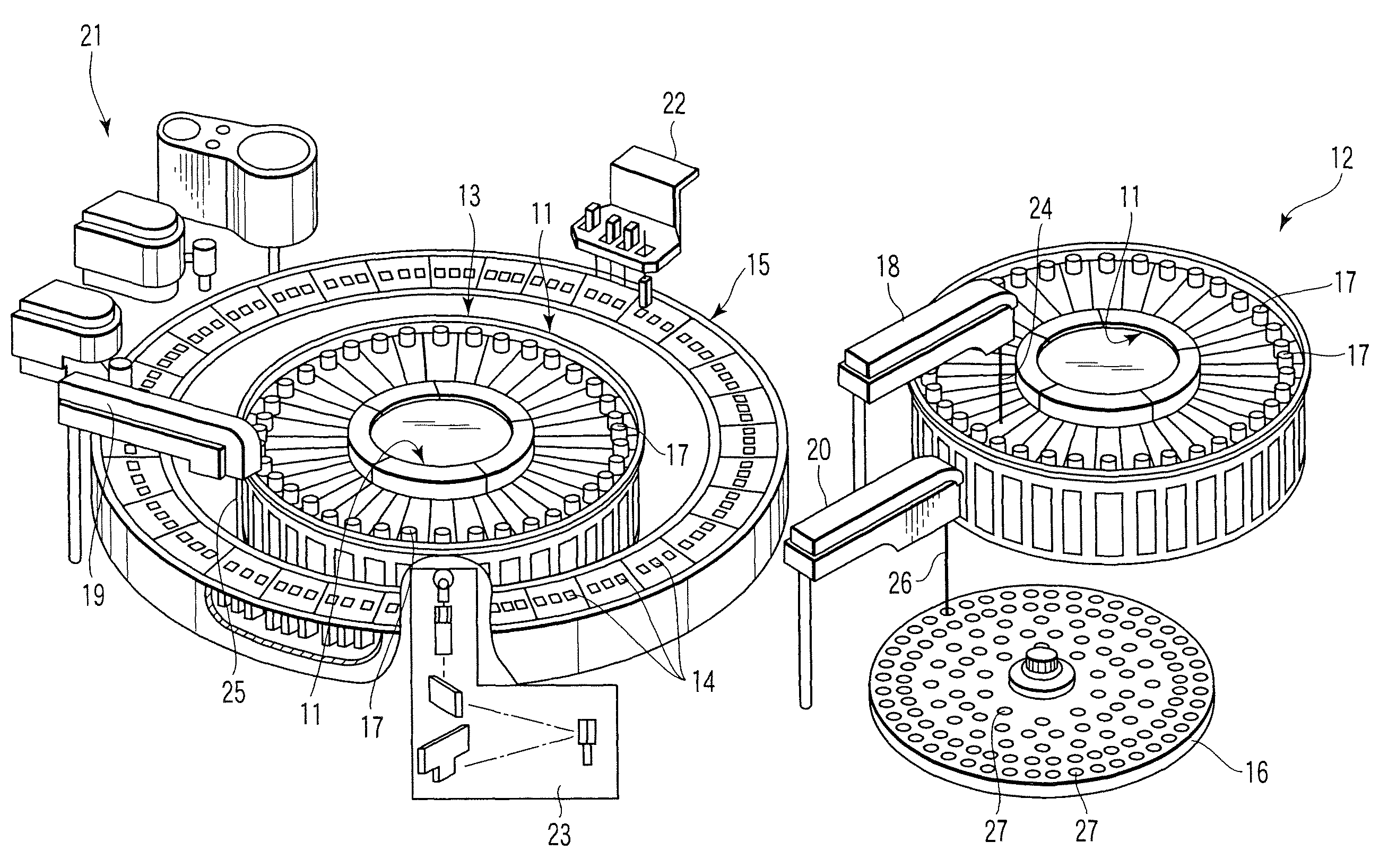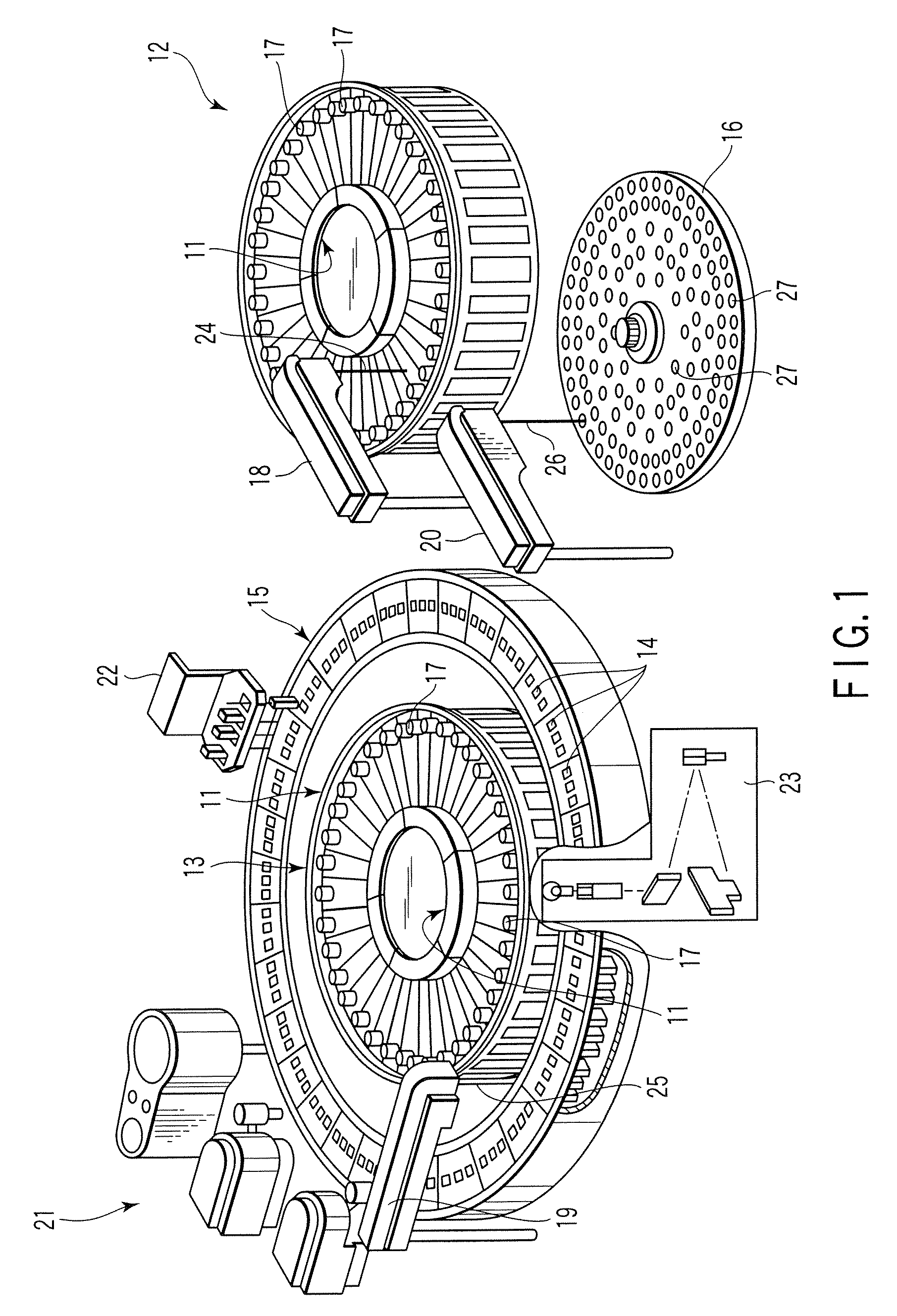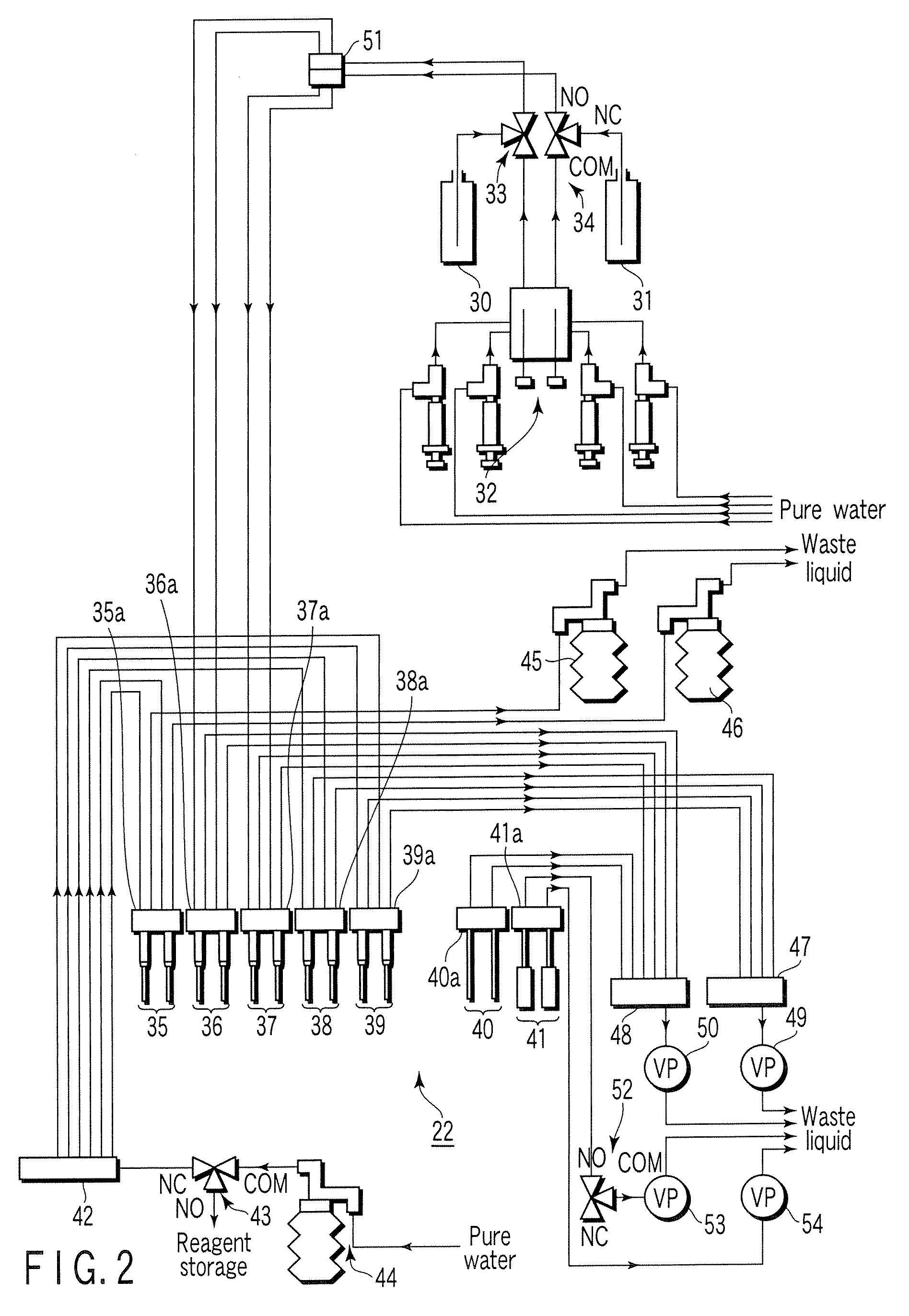Alkaline detergent for automatic analyzer, washing method for automatic analyzer, and automatic analyzer
a technology of automatic analyzer and detergent, applied in the direction of detergent compounding agents, liquid soaps, instruments, etc., can solve the problems of detergent vessel having whitening and segregation of cleaning solution, and difficult handling of detergent solution with such a large capacity, etc., to suppress the lowering of the detergent cloud point and high detergency
- Summary
- Abstract
- Description
- Claims
- Application Information
AI Technical Summary
Benefits of technology
Problems solved by technology
Method used
Image
Examples
example 1
[0052]4% (v / v) of polyoxyalkylene alkylether (EMULGEN LS-114; Kao Co., Ltd.) was added, as a nonionic surfactant, to a 1.2N aqueous solution of sodium hydroxide employed as an alkaline solution to obtain a mixed solution, to which ethanol was added as a cloud point-adjusting organic solvent to prepare an alkaline detergent. In this case, the concentration of ethanol was variously modified to obtain various alkaline detergents each having 2%, 4%, 6%, 8% or 10% (v / v) in ethanol concentration. Then, the cloud point of each of these alkaline detergents thus obtained was measured. Incidentally, the cloud point, measured as a simple substance, of polyoxyalkylene alkylether employed as a nonionic surfactant (3% (v / v) in concentration) was 88° C.
[0053]The relationship between the concentration and the cloud point is illustrated in FIG. 3. For the purpose of comparison, the cloud point of the detergent which was prepared according to the same procedures as described above except that ethanol...
example 2
[0055]4% (v / v) of a nonionic surfactant, 0.2% of sodium carbonate and 10% (v / v) of ethanol as a cloud point-adjusting organic solvent were added to a 1.2N aqueous solution of sodium hydroxide employed as an alkaline solution to obtain an alkaline detergent. In this case, as the nonionic surfactant, polyethylene glycol, polyoxyethylene laurylether, polyoxyethylene propyleneglycol and polyoxyalkylene alkylether were respectively employed.
[0056]By using the automatic analyzer as shown in FIG. 1, the cleaning of smear of pseudo-lipid was performed to compare the detergency of each of alkaline detergents. First of all, a reaction solution comprising a mixture of serum and a GOT-measuring reagent was poured into a reaction tube and heated at a constant temperature of 40° C. for one hour to create smear of pseudo-lipid. The concentration of the alkaline detergent used was set to 1.25% by volume to perform the cleaning of the reaction tube. Then, the reagent blank of T-CHO was measured.
[005...
example 3
[0067]An alkaline detergent was prepared by following the same procedures as described in Example 1 except that the concentration of polyoxyalkylene alkylether employed as a nonionic surfactant was changed to 1% (v / v), 5% (v / v) and 10% (v / v).
[0068]The detergency of each of the cleaning solutions thus obtained was investigated in the same manner as described in the above-mentioned Example 2 to obtain the results shown in FIG. 5. It will be seen from FIG. 5 that as long as the concentration of the nonionic surfactant is not less than 2% (v / v), it is possible to obtain excellent detergency.
PUM
| Property | Measurement | Unit |
|---|---|---|
| pH | aaaaa | aaaaa |
| cloud point | aaaaa | aaaaa |
| cloud point | aaaaa | aaaaa |
Abstract
Description
Claims
Application Information
 Login to View More
Login to View More - R&D
- Intellectual Property
- Life Sciences
- Materials
- Tech Scout
- Unparalleled Data Quality
- Higher Quality Content
- 60% Fewer Hallucinations
Browse by: Latest US Patents, China's latest patents, Technical Efficacy Thesaurus, Application Domain, Technology Topic, Popular Technical Reports.
© 2025 PatSnap. All rights reserved.Legal|Privacy policy|Modern Slavery Act Transparency Statement|Sitemap|About US| Contact US: help@patsnap.com



